Más Información

SEP debe informar sobre objetos peligrosos en revisiones escolares: Inai; violencia escolar ha ido en aumento
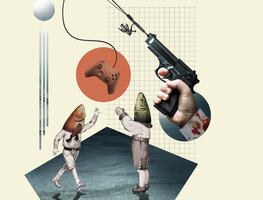
Videojuegos, el nuevo gancho del crimen para captar menores; los atraen con promesas de dinero y poder

“Vamos a dar apoyo a los pequeños agricultores por sequía en Sonora”; Claudia Sheinbaum instruye a Berdegué
“The most important discovery in the American continent” is how experts dubbed the discovery of over 300 Mixtec objects by Mexican archeologist Alfonso Caso, along with his wife María Lombardo and archeologist Eulalia Guzmán, in Monte Albán on January 6, 1932, best known as Tomb 7.
It was an excavation at the North Platform of the Monte Albán’s Main Square what led the archeologist discovery six Zapotec tombs of Mixtec chiefs buried by the late 15th century where they found crowns and gold jewelry, pearls, cups, alabaster glasses and rock crystal, obsidian and jade necklaces, among other precious objects.
The exploration also led to finding a skull covered in turquoise mosaics, two seashell disks in the eye sockets, and an embedded flint in the nose, in addition to bones engraved with Mixtec hieroglyphics that represented the days of the week.

This event was a milestone in Mexican archeology and provided further information on Zapotec and Mixtec culture. Moreover, two years later, it led to the creation of the “Law on Protection and Conservation of Archeological and Historical Monuments, Communities and Natural Beauty Places of 1934” and seven years later, in 1939, to the creation of the National Institute of Anthropology and History (INAH).
Recommended:
Currently, the collection of these pieces is located at Oaxaca’s Museum of Cultures.
This is how EL UNIVERSAl reported the news on the discovery in 1932.

The Mixtec jewels are worth millions
January 19th, 1932
Brief description of the marvels that were unearthed.
What an eyewitness says: “I saw the jewels, they were perfect (…) the Golden chests, the rock crystal, and jade glasses…”
It is unquestionable that the recently discovered tomb is the most important one discovered to date in the American continent: Feeling in the U.S.
By Jacobo Dalevuelta
“The feeling of respect and unmeasurable admiration I felt when Mr. Alfonso Caso showed the State Governor, in his office, the marvelous collection of objects found at the tombs of the Six Chiefs was so deep that, I’m sure, I have never before felt this profound veneration for our ancestors.
“Mr. Caso carried the treasures found in Monte Albán inside a modest pocket. The objects were carefully wrapped in paper for this lucky explorer had already performed the first classification of them.
“And I saw the perfect pearls that would gracefully best those from the legendary East; I saw them fall in the table of the Governor. And along with them, the bright golden beads that seemed to have been chiseled moments before; and I saw the golden plat and the feather that signaled the crown of the early chief whose sleep was interrupted by the demolition and by Mr. Caso’s insatiable desire for knowledge. And I saw the alabaster and rock crystal glasses, and the jade necklaces and the skull covered in a dazzling turquoise mosaic…”
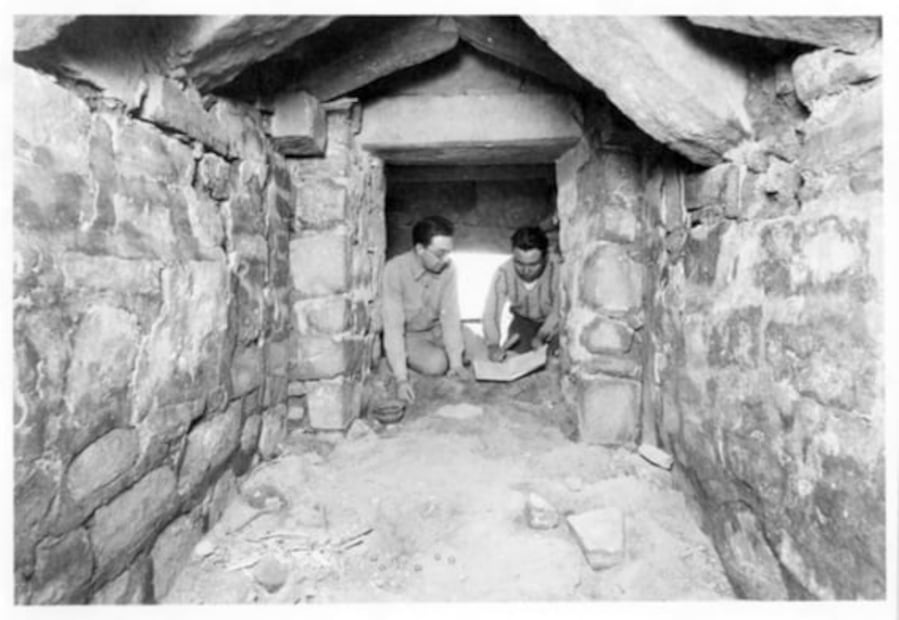
And so would continue the superlative emotion of that person who was the first I heard saying “I saw it.” But with a bit of cruelty, I interrupted him and asked:
How much do you think the jewels found by Mr. Caso are worth? He got startled for very brief time because he was not expecting such a despicable and material question.
“In order to answer your question, which I would only have expected from a North American reporter, I will say: I think any museum from “the other side” would not doubt to issue a check for a million dollars in exchange for the jewels. And perhaps a bit more. The gold found in the marvelous pieces weighs six kilograms”
Recommended:
The tomb of an ancient monarch
And thus we immediately went to the place of a more select investigation. Our interviewee talked for a long time with Mr. Caso and so we were able to know something more precise that expands the work of our reporter in Oaxaca.

“The tomb is of Zapotec origin, no doubt. It must have had ashes from an early Zaachila – a chief – until the Mixtec hand broke it to bury for eternity, the ashes of great chiefs who slept undisturbed until now.
“The interior decoration of the tumb clearly corresponds to the Zapotec civilization, but the jewels are Mixtec and prove the extraordinary progress in which indigenous people lived when the Colonizers arrived. According to Mr. Caso, the burial of the Chiefs must have taken place by the end of the 15th century or by the early 16th century.
Do you know what the archeologist felt when his eyes witnessed the marvelous Discovery?
Mr. Caso has shown his joy at all times. But, since the discovery of the tomb, he has lived with constant uncertainty for he knew about the danger of interest from other people. That’s why he kept the secret broken by EL UNIVERSAL’s reporter in Oaxaca. Luckily, things have changed now because the area is completely surveilled. There is no danger of someone stealing anything.
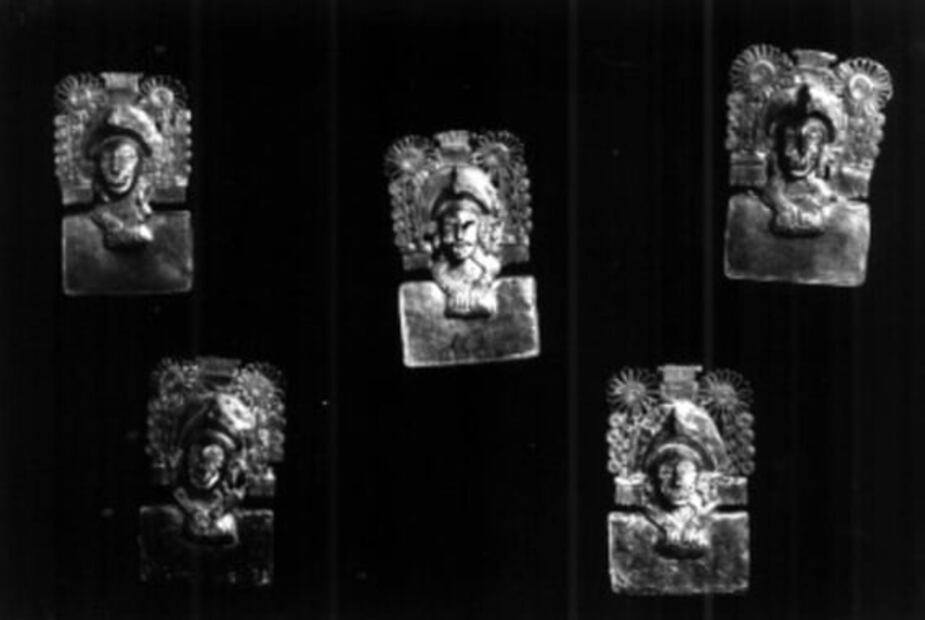
The marvel of metalwork
“I find it very difficult for modern metalwork, despite its current tools, to best the perfection or beauty and security of the artistic progress of Mixtec people who worked the gold with their hands, the jade, the rock cristal, etc. from which are made the objects of the “Caso Collection” found in Monte Albán.
“The gold, silver,r and copper rings are made in such a way that I’m sure foreign metalwork will soon launch the reproduction of these jewels; introducing a new Mixtec trend as happened with the Luxor discoveries. The gold chest that weighs over half a kilogram has a crowned human head engraved; a drawing in gold filigree; the top part of the plate is decorated and the dates of its time cover the low part of the same plate with amazing details. If it were not for the unquestionable truth, it could be thought that that gold – due to its brightness and purity – would come from a modern metalworker. Just as the Chief’s crown that displays a bird feather made with gold, too.”
Recommended:
“It has been thought a mere exaggeration that the Discovery included pearls the size of a dove’s egg. I had them in my hand. They are perfect; they are pierced because they were part of a necklace and are extremely beautiful. And the gold chain necklaces and the dazzling gold beads.”

He then talked about the rock cristal objects, “The glass – he said – was so exquisitely carved that it is, in some parts, as thick as a sheet of paper. It amazes the eye. Then comes the jade collection comprised of bright green bead necklaces and pennate gods.”
The turquoise mosaic skull
He then talked about the human skull. “It is perfect and of normal measures. The turquoise inlay goes from the top part and up to the cranial cavity. It’s like a net of jewels they put there to cover the hole. And as a singular ornament, it also has, in addition to the beautiful mosaic, other turquoise inlays below the cheekbones. The obsidian dagger is at the hole of the nose. What meaning could hold this weird dagger? The skull must have belonged to someone who deserved such an honor. This object inspires respect, admiration, and charm.”
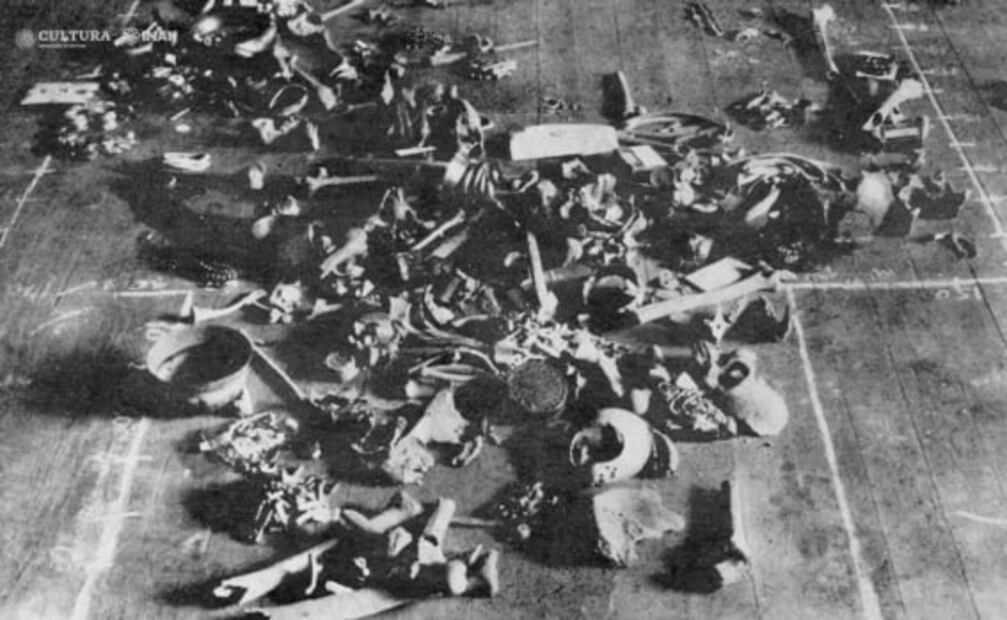
The engraved bones
“The engraved bones have dates; there’s one with the days of the week in Mixtec hieroglyphics.” Mr. Caso has been able to read – decipher- these signs, because they correspond to the Nahoa writing system, for the influence of the Aztecs was very strong at different times in the development of Mixtec cultures. Caso said that if the signs were Zapotec, he could not have been able to decipher them.
“These objects made of engraved human bones are old war trophies conquerer, probably, by the chiefs who were buried at the Zapotec tomb.” Only Time will tell. “With no doubt, the recently discovered tomb is the most important found so far in the Americas.”
Recommended:
Everybody asks
Both Mr. Caso and the state governor have received telegrams from 300 newspapers from the United States and news agencies in New York asking for further information on the Discovery the know about thanks to EL UNIVERSAL. Some telegrams announced the arrival of special reporters in Monte Albán. American universities have also made inquiries in order to send their professors to the site.

The people are amazed
When, thanks to EL UNIVERSAL, the people in Oaxaca knew about the new marvelous Discovery, and I say marvelous because it is, the news reached the whole city. The town feels the owner of a treasure they are convinced they can take care of, as they have been able to take of not so worthy but beloved jewels, such as those discovered by Mr. Caso. Everyone wishes to see the rings, the plates, the jades, and the alabasters. Oh! We forgot about a gold ring of over three centimeters tall that has a trinket in the shape of an eagle and of the gold nose ring that ends in a bell. When the nose ring is shaken, the eagle with extended wings sounds delightful.
The movement in favor of Oaxaca preserving these relics is strong despite everyone knows they were found in a federal area and by an exploration carried out by federal workers.
“When I asked Mr. Caso about this,” said the interviewee, “he effortlessly told me: ‘This satisfaction must be for the nation’” People are only waiting for the arrival of Governor López Cortés, who is now in the capital, to open the exhibition organized by Mexico’s Bank for the “Caso Collection,” which is called after the archeologist who discovered it.

How the amazing jewels were found at the tomb of the six Mixtec chiefs
January 20th, 1932
The skeletons were sat with great dignity on pedestals.
The one with the highest power held a rich feather fan, from which only the handle was preserved, made of jade.
There were some broken Zapotec pots at the entrance of the tumb, perhaps meant to trick those who found a way to enter.
By Jorge Ituribarría
Mr. Caso, who is still full of surprise over the amazing discovery of a tomb, has turned his office in an archeology and investigation laboratory where he, his wife, Martín Bazán, Eulalia Guzmán, work hard around a table where something shines like the treasure of the Count of Monte Cristo: gold crowns, giant pearls, alabaster glasses, jewels engraved with one-of-a-kind filigree, turquoise, rock crystal glasses, gold, jade, amber, and onyx necklaces… The Thousand and One Nights! The whole treasure of the chiefs, the great lords of the Mixtecatl land, whose top hero, in their fantastic theogony, shot an arrow to the Sun and defeated it.
Recommended:
Mr. Caso told me some interesting details of the great discovery: From the moment they found the first tomb, several circumstances made him think they were inside a pantheon.

The six chiefs
Mr. Caso says the chiefs were arranged without a harmonious distribution. Three of them were located at the entrance of the tomb, next to the antechamber, and the other three were scattered in the rest of the space. They were all sitting with an air of dignity on some rock pedestal. One of them, possibly the richest one of the one with more authority, was holding a jade stick. Mr. Caso says there were some BROKEN Zapotec pots at then entrance, perhaps to hide the existence of the remains, for it is known that the chiefs were Mixtec and were carefully buried in an old Zapotec tomb. These precautions are explained by accepting the hypothesis that the Mixtec could have been surprised and defeated by the Zapotec, their enemies, and that such an untimely and formidable fight would have killed the six chides. Supposing things happened in that way, it is quite logical to think that, since the Mixtec could not take the remains of their chiefs and hoping to recover Monte Albán, they would have temporarily left them, with the aforementioned precautions, to prevent their jewels from being stolen.

Oaxaca wants to keep the treasure
January 22nd, 1932
Over 300 objects
The whole city saw the discovered treasure
Governor López Cortés, along with Mr. Alfonso Caso, arrived at the Federal Palace to inaugurate the exhibition of the archeological treasure found in the tomb of the six chiefs in Monte Albán.
Mr. Caso delivered a brief speech on the event:
“Since you are the Governor and for helping on the works of the expedition, I’m honored to invite you to come open the doors of the exhibition. I think we should we proud to descend from a strong and powerful race that knew how to leave prints of its culture and art.”

Over 300 objects
The event was also attended by a group of lawmakers and local rulers, the direction of the Trade Chamber, and military authorities. The exhibition has over 300 objects: from pearls to gold beads. They are displayed inside showcases put over tables. Oaxaca’s people surrounded the Palace since the morning, waiting to enter and witness the marvels that will amaze the whole world. They were allowed to come in once the official inauguration concluded, Federal soldiers watch after the jewels and are in charge of organizing the attendees in order to prevent large crowds.
Everyone in Oaxaca talks about the jewels found in this land and as kits governors to keep the treasure in the state, asserting they will take good care of the worthy legacy of their ancestors. It would really distress the local population to know the treasure is claimed for Mexico. Elderly people, carried in arms, arrived at the Federal Palace to see, in their last days, the magnificent jewels. The emotional depth caused by the discovery can only be compared to the one that was registered after the January 14 earthquake.
Recommended:
Feeling empathy for the people’s feelings, I asked Mr. Caso about the future of the jewels. He told me he thinks it is essential to take them, that they belong to the country, to Mexico, for many reasons. He knows the people in Oaxaca will want to take care of them with all their love, but the objects must be studied, analyzed, and multiple scientific research must be done. The elements to perform them do not exist in Oaxaca.
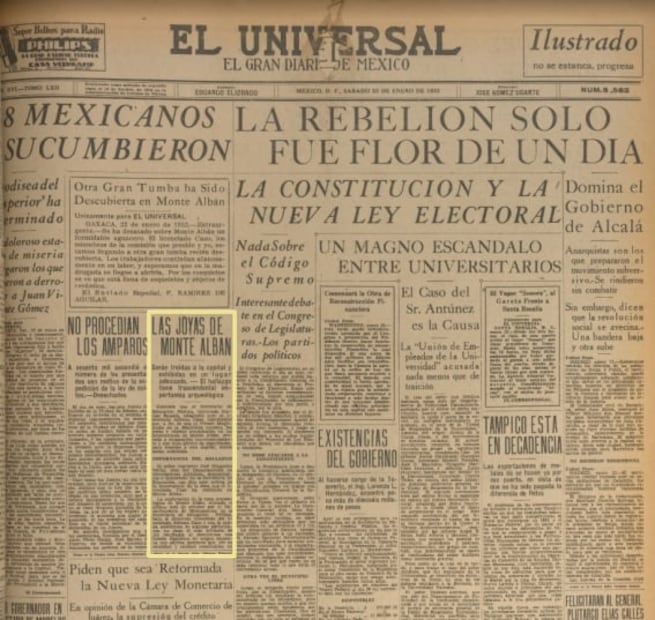
Monte Albán’s jewels
January 23rd, 1932
They will be brought to Mexico City and displayed in an adequate place. The discovery has archeological transcendence.
We know the Public Education Minister, Narciso Bassols, sent a telegram to Mr. Alfons Caso telling him that, in order to Mexico’s Prime Magister to know the jewels and objects found in Monte Albán, he must proceed to pack them conveniently and will all the deemed security to bring them to the capital, where they will be exhibited.
The relevance of the discovery
Mr. José Reygadas Vértiz, chief of the Education Ministry’s Depart of Artistic, Archeological, and Historical Monuments, informed us yesterday about the importance of the work performed by Mr. Caso in Monte Albán.

The exploration of the Monte Albán archeological site, that began last October by the Department of Monuments of the Public Education Ministry, under the immediate charge of Mr. Alfonso Caso, and with the economic support of some private individuals, has shown the most brilliant results by discovering a wealthy tomb of Zapotec origin with Mixtec objects that, due to their number and quality, comprised a truly scientific and material treasure.
The discovery has been the result of an effort oriented from the scientific perspective, boosted by enthusiasm, and governed by absolute honesty, all of the characteristics that describe Mr. Caso, to whom the Department of Monuments trusted the immediate direction of the work, knowing beforehand there would be a positive result. It was not easy for the explorer to locate the proper place, but the labor was crowned by success. It can be said that the recent discovery of the Egyptian tombs are as important to that country’s archeology as Monte Albán is for Mexican archeology.
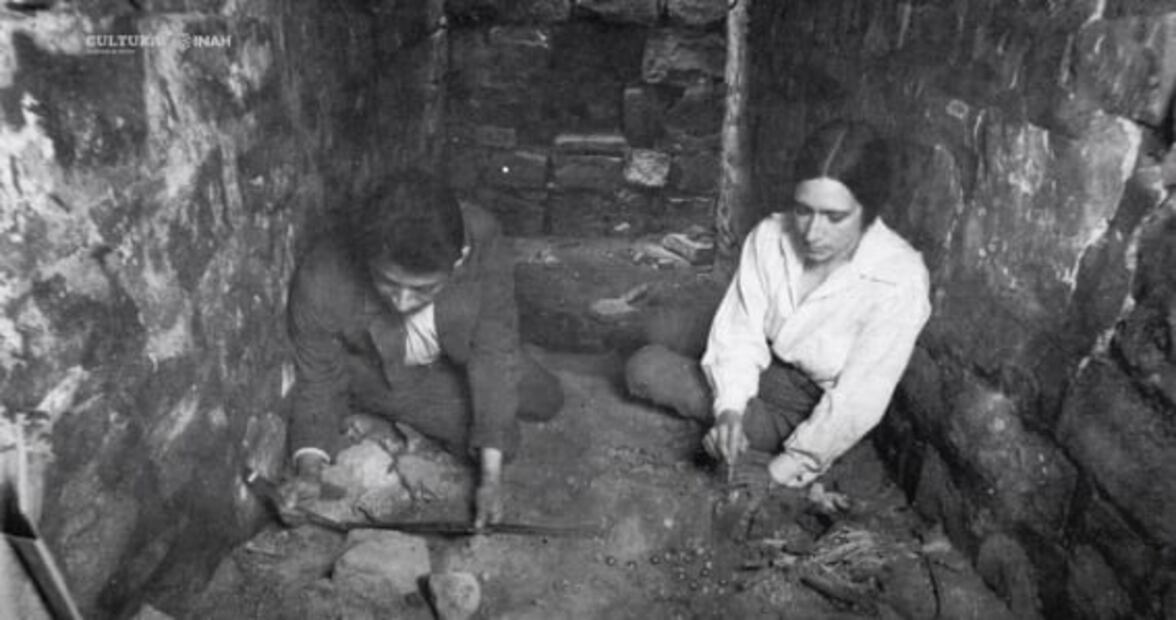
The description is not ready
The discovered objects are made with superior quality and there are many precious pieces, among which there was not a single ceramic object; they are made of gold, jade, alabaster, rock crystal, and turquoise.
Recommended:
A detailed scientific description of the jewels is not available yet, not even for its main pieces. It was necessary to look after their security first, after a precise registry of their location when they were discovered for the true reconstruction of the discovery and the creation of an inventory; a very hard task due to the number of pieces. There will be an exhibition in Oaxaca so that its people get to know the importance of the discovery and we will soon have the MONTE Albán treasure in Mexico City because it is essential to bring it here in terms of security, research, and so that federal authorities can see it.
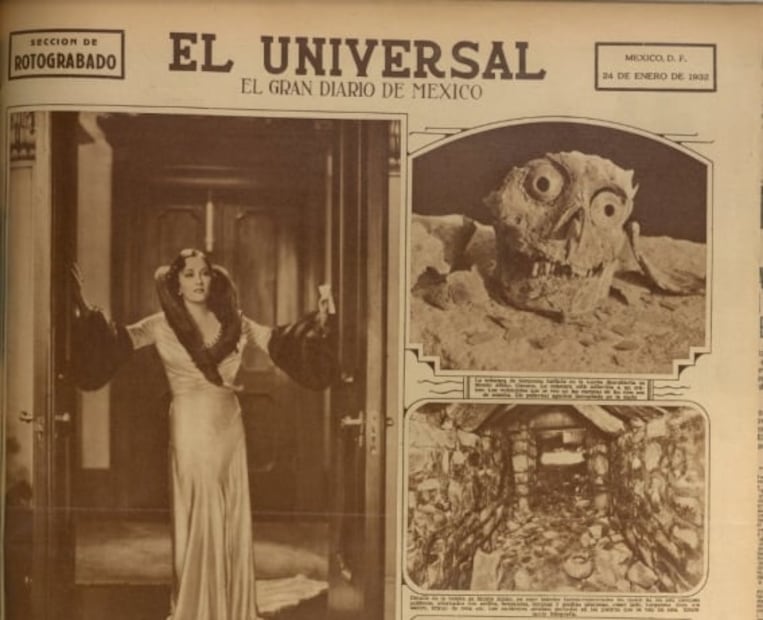
13,000 Mexican pesos
According to Reygadas Vértiz, Mexicans should feel proud: the discovery is our work and all of it will remain in Mexico and will be studied and published. It must be stressed that the precious collection cost Mexico nearly MXN $13,000, the total cost of the expenses at Monte Albán; two-thirds were provided by the Public Education Ministry and one third came from private individuals; this amount considered the excavations at the Main Square’s North Platform, that has unveiled a magnificent staircase that is 40 meters long with 2-meters-wide rafters, and the building layout on its East, South, and West.
mp







